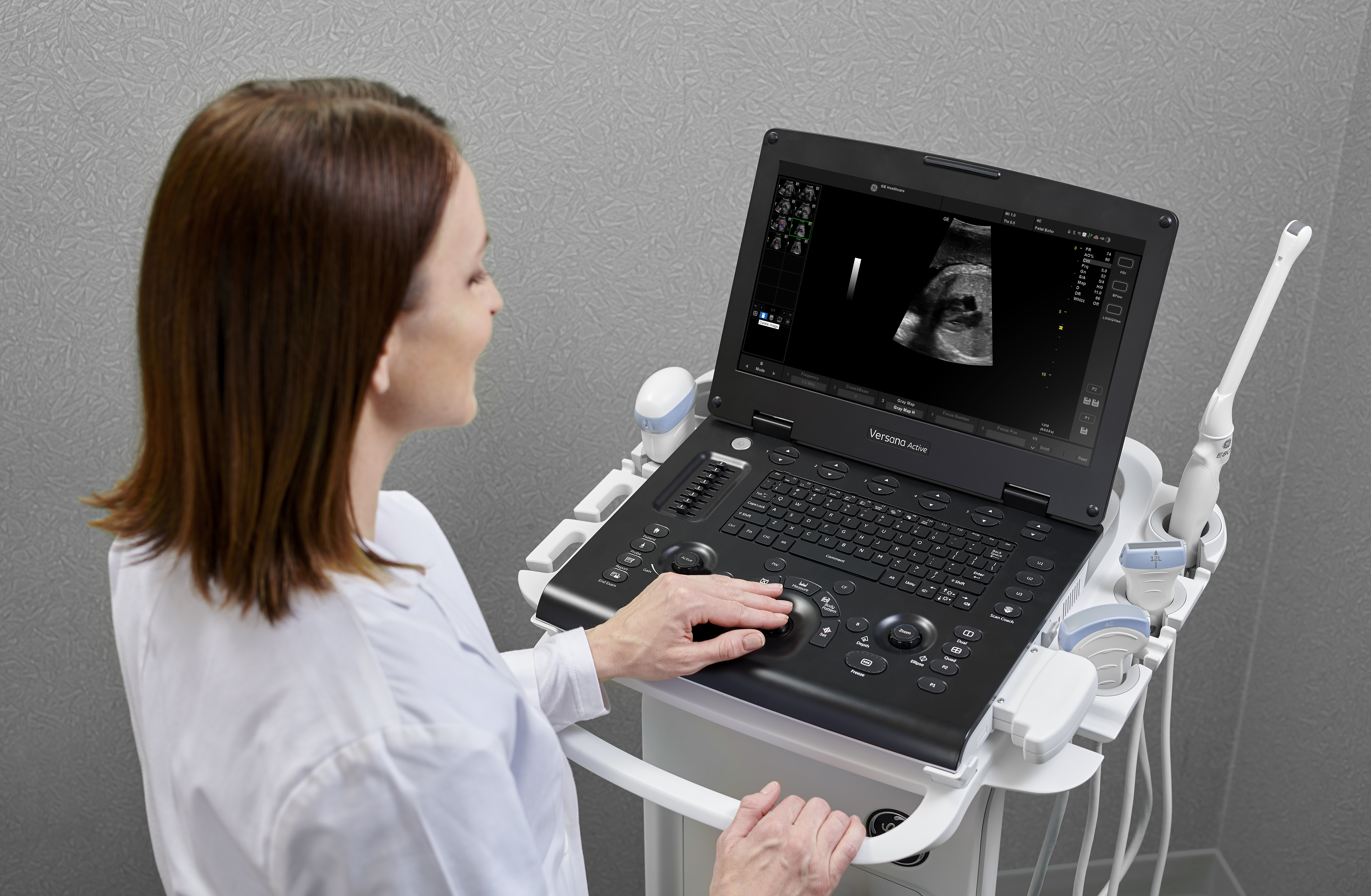Ultrasound system use in the primary care landscape continues to be a game-changer for general practitioners (GPs) and all other primary care clinicians.1 It has helped improve patient satisfaction and health outcomes, accelerate diagnosis, strengthen patient-provider relationships, and create new avenues of growth for practices of all sizes.
But these benefits are only possible when choosing the right system. To that end, it's essential to know what to look for when selecting an ultrasound unit. Whether you're upgrading to a new system or are a novice to the ultrasound experience, let's examine some must-haves and important questions about your next device.
What system is right for your current patients?
Consider your current patient population's care needs and ask yourself where ultrasound fits into your current scope of practice. Whether your patient needs an abdominal, thyroid, musculoskeletal, cardiac, or fetal ultrasound, the right system should offer you that flexibility to support your daily work. Versatility is one of the most important qualities in an ultrasound, particularly with the way newer systems are embracing multi-use application. However, you may still want a system that offers focused care toward specific condition areas.
What system is right for your future patients?
You're not just buying a system for the present. Think about your growth objectives, prospective caseload changes, personnel projections, and where ultrasound fits into these plans. You'll want a device that can be easily upgraded to meet expansion needs, is user-friendly for staff of all sizes and experience levels and is agile enough to treat new conditions when shifting patient demographics necessitate it. If you choose a multi-use ultrasound unit, think about what probes you will need in the future to accommodate new condition areas.
What system will provide the best image clarity?
Image quality is determined by penetration depth, resolution, and contrast.2 Some of the primary criteria used for evaluating image quality include grayscale mapping, the measure of the contrast between the tissue of interest and the background, and high resolution. You should look for a system with intuitive tools that allow you to:
-
Automatically optimize an image even as you move between structures
-
Combine optimized ultrasound image quality with automated measurements
-
Quickly adjust presets to adjust imaging features
-
Automatically enhance or suppress color-flow signal to enable a precise diagnosis
Some systems also have the option of static 3D imaging for quick reconstruction of anatomical sweeps and 4D to add the dimensionality of movement. Highly sensitive color-flow tools, such as B-Flow and B-Flow color, allow for visualization in tortuous and low flow vessels.
What are the immediate and long-term costs?
Budget and cost are key factors when choosing an ultrasound system. This includes the up-front price as well as long-term repair and maintenance costs. For each system you're considering, find out:
-
What financing options are offered
-
What is covered under service and warranty contract
-
What service network coverage is available in your region
You should also consider the organizational growth potential of ultrasound integration versus short-term investment. Also, be sure to verify with the vendor that the system is new or refurbished based on your stated preferences.
What is the vendor's reputation and experience?
Research your prospective vendor's legacy, experience, and reputation in the ultrasound space. Find out how many installations they've performed in your region and look for feedback from other users on the system you're considering, the installation experience, and general vendor service and support. Working with an experienced leading manufacturer helps ensure they will be able to provide comprehensive support wherever you are.
What is the system's footprint?
Space remains at a premium in primary care offices, which often factors into purchasing decisions. One of the main criteria for integrating a primary care ultrasound system into your practice is the ability to transport it throughout the facility..3
Lightweight, portable, and compact systems save space and enable easy mobility between rooms, while their extended battery life allows for seamless transport between facilities, maximizing versatility and utility.
What education and training resources are available?
It's important that your system offers robust training and education resources—especially since many general practitioners are newer to ultrasound itself, not just the device. Make sure the manufacturer you choose offers comprehensive training and support resources to flatten the learning curve. This includes vendor training, as well as virtual tools that provide continued onboard education to improve proficiency and help clinicians keep learning.
As part of system training and overall product orientation, ask the vendor for a demonstration before and after the purchase. Make sure they're able to offer a designated period of onboarding at your facility.
Whether you're a clinician, practice manager, or procurement specialist, it's essential to be up to speed on the basics of ultrasound when buying a new system. There are many online journals and resources that can help you become familiar with the physics of ultrasound, best practices, how it's applied in different care areas, and much more.
Currently, ultrasound is at a unique point in its evolution, with more features being added with each generation of systems and AI taking a more significant role in enabling smarter scan guidance, greater productivity, and more informed clinical decision support.
Understanding what to look for when buying a new system can help ensure you're making the best decision for your practice. Versana ultrasound systems* are affordable, complete solutions offering exceptional imaging and dependable quality.
*Not all products are available in all regions. Check with your local sales representative.
Resources:
1. Carrera, K. G., Hassen, G., Camacho-Leon, G. P., et al. The Benefits and Barriers of Using Point-of-Care Ultrasound in Primary Healthcare in the United States. Cureus. 2022; 14(8): e28373. https://doi.org/10.7759/cureus.28373
2. Sassaroli, E., Crake, C., Scorza, A., Kim, D. S., & Park, M. A. (2019). Image quality evaluation of ultrasound imaging systems: advanced B‐modes. Journal of Applied Clinical Medical Physics, 20(3), 115–124. https://doi.org/10.1002/acm2.12544
3. Primary Care Unit. Shortage of premises space in primary care threatens GP capacity to teach medical students. University of Cambridge. https://www.phpc.cam.ac.uk/pcu/shortage-of-premises-space-in-primary-care-threatens-gps-capacity-to-teach-medical-students/.
JB33938XX

